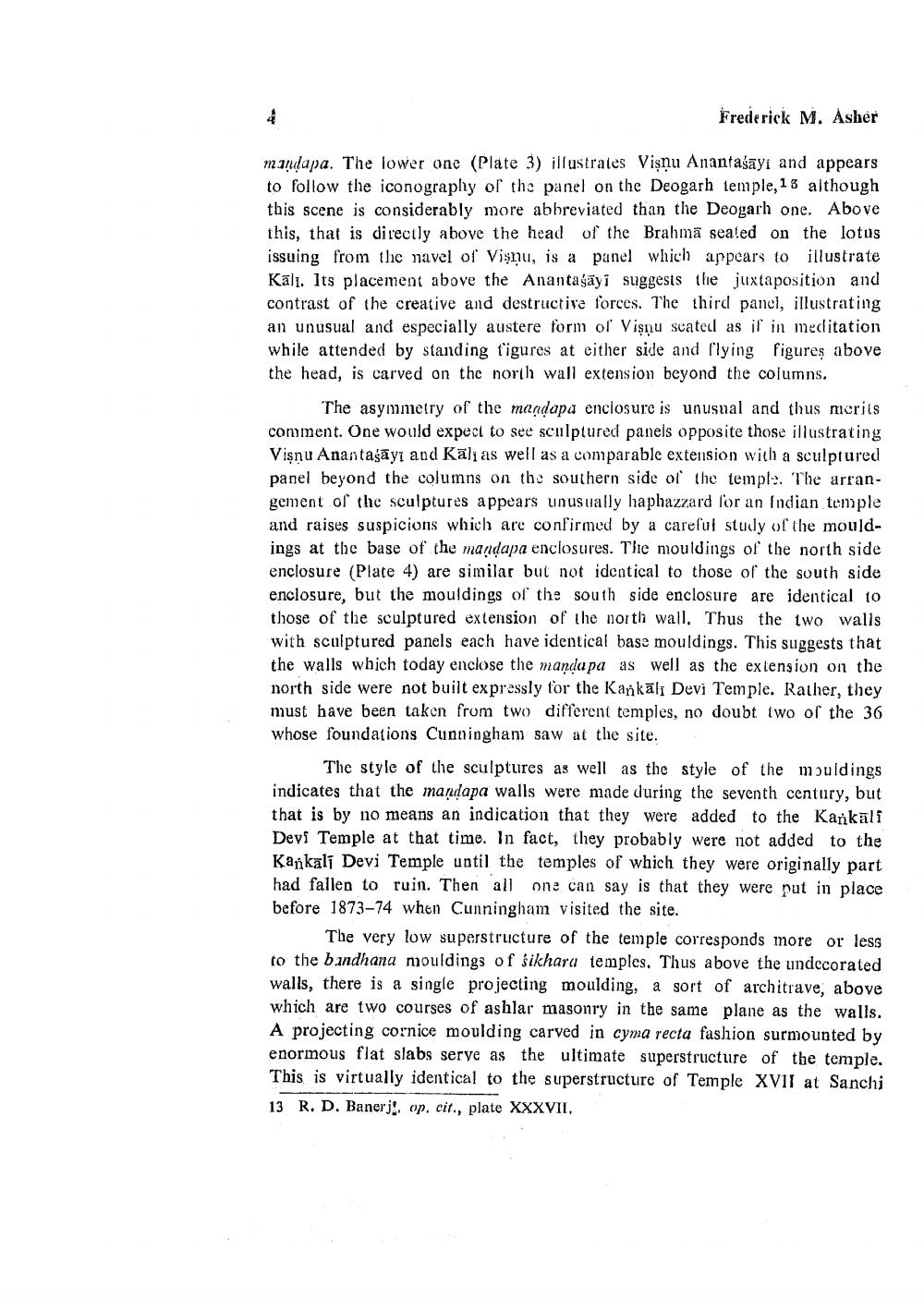Book Title: Sambodhi 1977 Vol 06 Author(s): Dalsukh Malvania, H C Bhayani, Nagin J Shah Publisher: L D Indology Ahmedabad View full book textPage 7
________________ Frederick M. Asher m.indapa. The lower one (Plate 3) illustrates Vişnu Anantaśāyi and appears to follow the iconography of the panel on the Deogarh temple, 13 although this scene is considerably more abbreviated than the Deogarh one. Above this, that is directly above the head of the Brahmā sealed on the lotus issuing from the navel of Vişnu, is a panel which appears to illustrate Kāli. Its placement above the Anantaśāyi suggests the juxtaposition and contrast of the creative and destructive forces. The third panel, illustrating an unusual and especially austere form of Vişnu scated as if in meditation while attended by standing figures at either side and flying figures above the head, is carved on the north wall extension beyond the columns. The asymmetry of the mandapa enclosure is unusual and thus morils comment. One would expect to see sculptured panels opposite those illustrating Vişnu Anantaśāyi and Kālias well as a comparable extension with a sculptured panel beyond the columns on the southern side of the temple. The arrangement of the sculptures appears unusually haphazzard for an Indian temple and raises suspicions which are confirmed by a careful study of the mouldings at the base of the mandapa enclosures. The mouldings of the north side enclosure (Plate 4) are similar but not identical to those of the south side enclosure, but the mouldings of the south side enclosure are identical 10 those of the sculptured extension of the north wall. Thus the two walls with sculptured panels each have identical base mouldings. This suggests that the walls which today enclose the mandapa as well as the extension on the north side were not built expressly for the Karkāli Devi Temple. Rather, they must have been taken from two different temples, no doubt two of the 36 whose foundations Cunninghan saw at the site. The style of the sculptures as well as the style of the mouldings indicates that the mandapa walls were made during the seventh century, but that is by no means an indication that they were added to the Karkāli Devi Temple at that time. In fact, they probably were not added to the Kankali Devi Temple until the temples of which they were originally part had fallen to ruin. Then all one can say is that they were put in place before 1873-74 when Cunningham visited the site. The very low superstructure of the temple corresponds more or less to the bandhana mouldings of śikhara temples. Thus above the undecorated walls, there is a single projecting moulding, a sort of architrave, above which are two courses of ashlar masonry in the same plane as the walls. A projecting cornice moulding carved in cyma recta fashion surmounted by enormous flat slabs serve as the ultimate superstructure of the temple. This is virtually identical to the superstructure of Temple XVII at Sanchi 13 R. D. Banerj!, op. cit., plate XXXVII,Page Navigation
1 ... 5 6 7 8 9 10 11 12 13 14 15 16 17 18 19 20 21 22 23 24 25 26 27 28 29 30 31 32 33 34 35 36 37 38 39 40 41 42 43 44 45 46 47 48 49 50 51 52 53 54 55 56 57 58 59 60 61 62 63 64 65 66 67 68 69 70 71 72 ... 420
